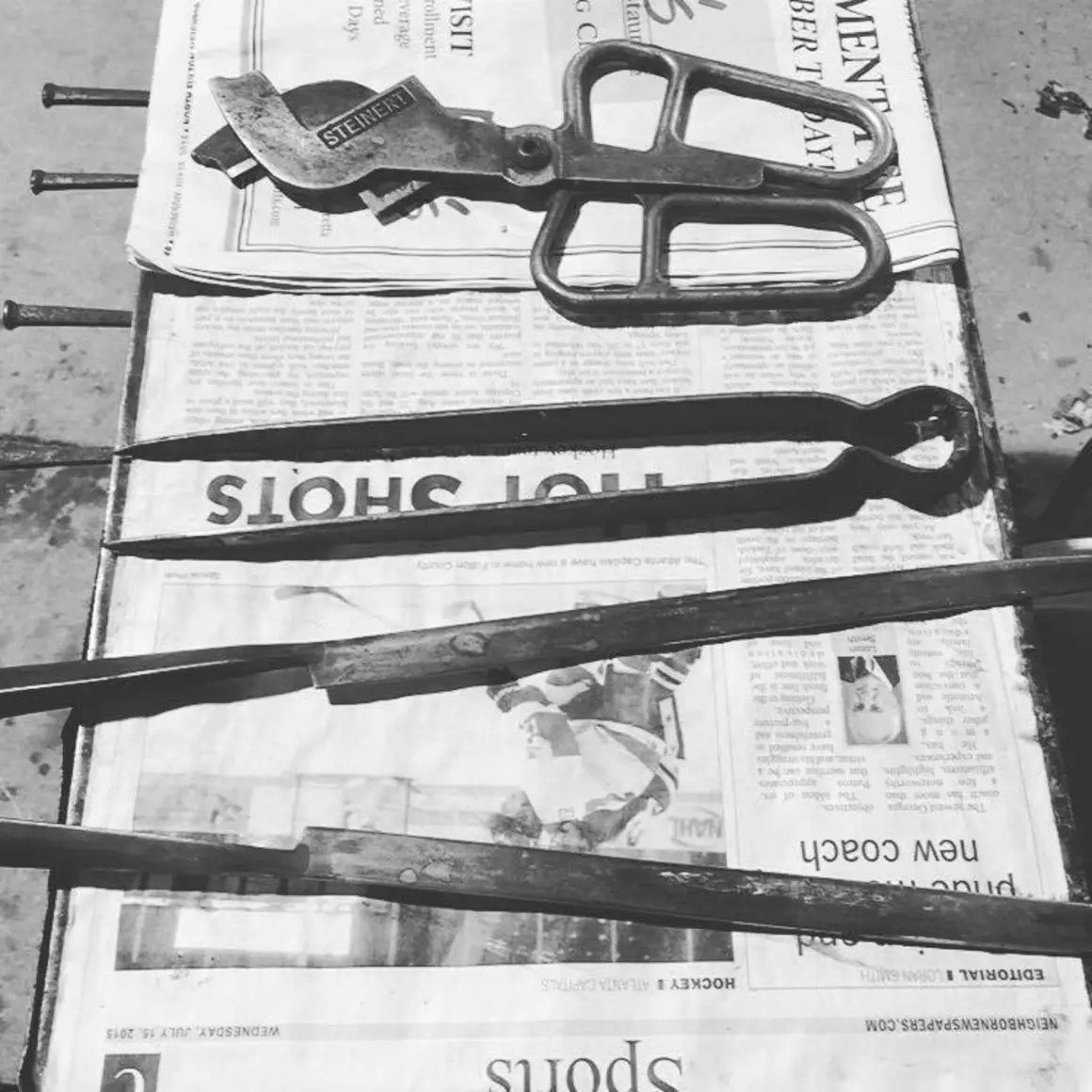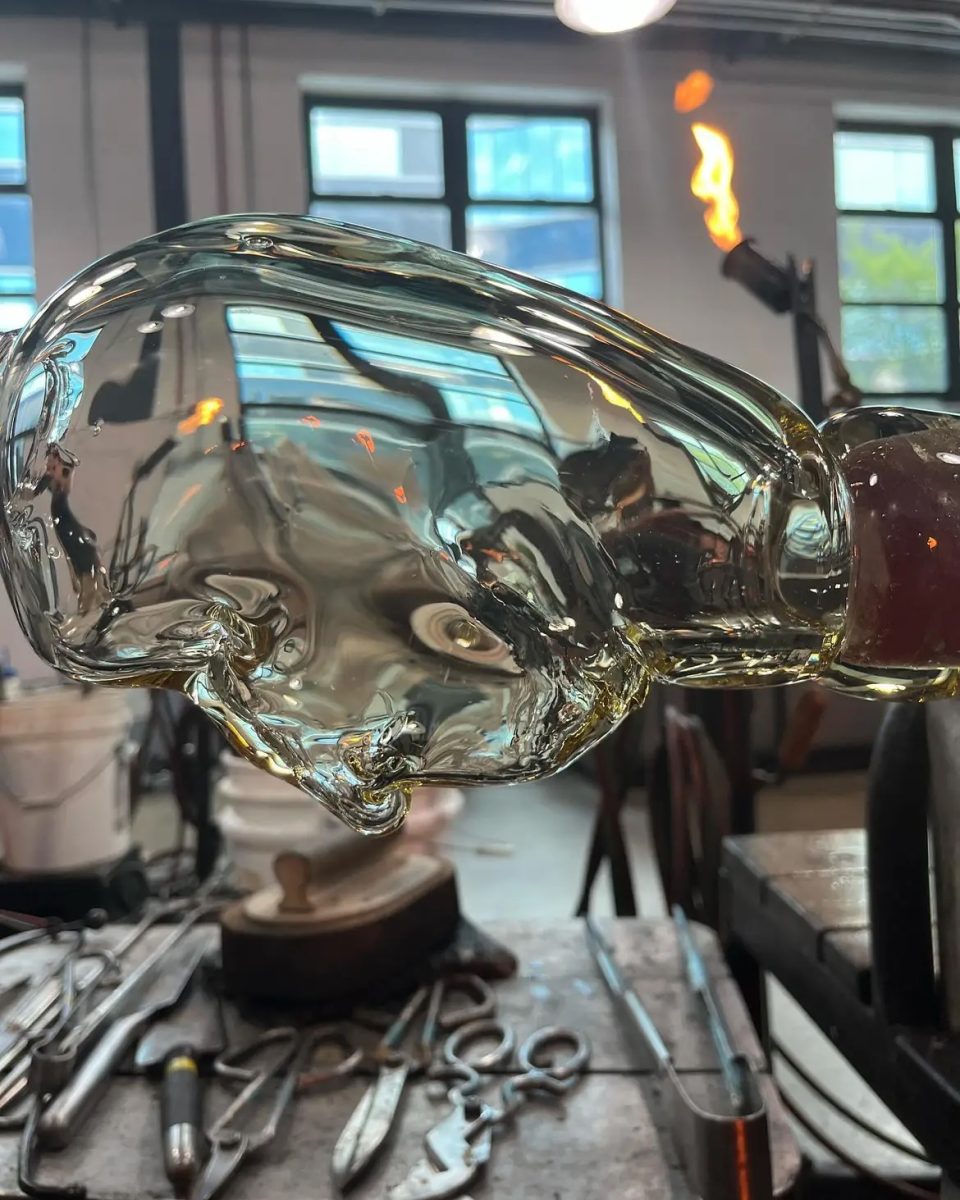JAMIE ADAMS
The Process

MELT GLASS CULLET
SCULPTING ARTPIECE
ANNEAL OVERNIGHT
COOL TO THE TOUCH
Beginning with a heavy background in printmaking art was always about process as much as it was about product. In diving into sculpture and moving from print to 3D materials like clay, metal and finally glass; theres nothing like the process of hot sculpture. My small furnace gets up to above 2000 degrees in about 3 hours which allows me to melt glass cullet and work with the raw material adding color and using the same metal tools that have been used in glassblowing for thousands of years to create my products.
After sculpting a piece from any where between 20 minutes to a few hours of time in front of the hot furnace going back and forth making sure to keep the heat in the piece I’m working on, I anneal (or cool) the piece slowly overnight on a program my kiln controller is set to specifically to be sure there’s no stress left in the glass when it’s molecules slow enough for the molten material to freeze in time.
We can’t see or touch the sculptures right after they’re made but the next day the kiln can be opened while the glass sculptures are still warm to the touch and the process is finished.

The Art Of Glass Sculpting
Glass sculpting is a delicate and intricate art form that involves shaping molten glass into stunning designs. The process begins by heating raw glass in a furnace until it reaches a molten state, typically around 2,000°F (1,093°C). Once the glass is molten, artists use tools like blowpipes, tweezers, and paddles to shape it. Some sculptors use glassblowing techniques, inflating the material with air to create hollow forms, while others opt for solid sculpting, manipulating the molten glass with tools to craft intricate details. Throughout the process, the glass must be constantly reheated to maintain its malleability, preventing it from cooling too quickly and cracking.
Once the sculpture takes its final shape, it undergoes a crucial annealing process. This involves slowly cooling the piece in a temperature-controlled kiln to relieve internal stress and prevent it from shattering. Depending on the size and thickness of the sculpture, annealing can take anywhere from several hours to days. After cooling, artists often refine their work through cutting, polishing, or sandblasting to enhance texture and detail. Some sculptures incorporate colored glass or additional embellishments, adding depth and dimension. The final result is a mesmerizing piece that captures both the fragility and resilience of glass as an artistic medium.
